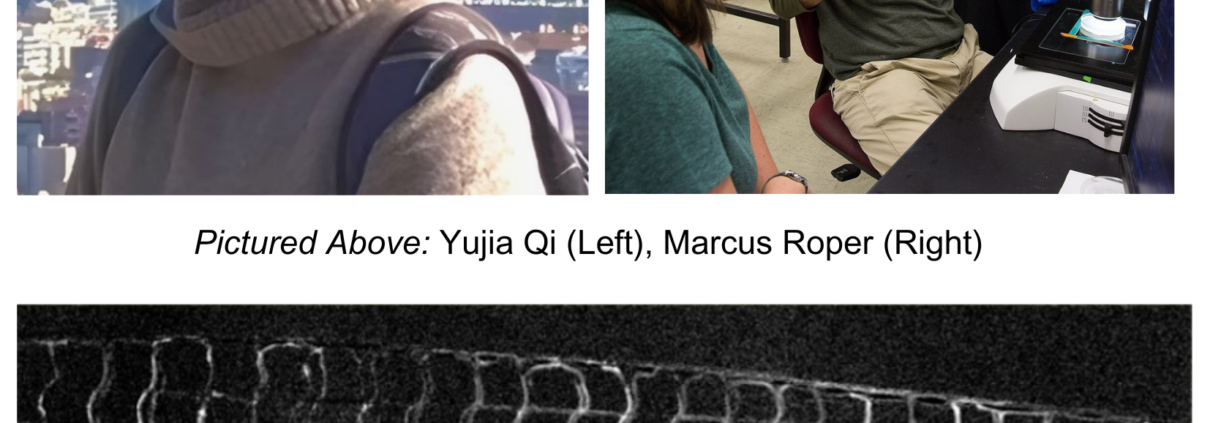Every tissue in the body needs oxygen. The delivery of oxygen to tissues is orchestrated by the constant flow of trillions of red blood cells passing through billions of capillaries; a feat of plumbing unrivaled by any human-built hydraulic network. There are so many capillaries that the information for their wiring is too complex to be coded genetically. Instead, the network grows in response to the flows of blood that it needs to carry. But, the growth of the network also changes the flow of blood. Mathematical models of the process of blood vessel growth could not, until now, produce real networks of capillaries. In a work published in Proceedings of the National Academy of Sciences (PNAS), recent UCLA graduates, Yujia Qi and Shyr-Shea Chang, working with their advisor, Marcus Roper, set out to answer this question. They worked with UCLA biomedical engineers in the group of Dr. Tzung Hsiai, to study blood flow in zebrafish embryos. Zebrafish embryos have much simpler circulatory systems than people, with only a few dozen vessels, but they use the same genetic systems, and, like humans, rely on the feedback from blood flow to build their blood vessel circuits. Even better, the zebrafish embryo is completely transparent, so the blood vessels, and the flow of blood through them can be seen by putting a living fish under a microscope.
Previous models had treated blood as a homogeneous fluid, and could not make any network that contained loops, even one as simple as the zebrafish’s. The team found that physical feedback from the blood cells themselves was enough to build the zebrafish blood vessel network, and even to explain a remarkable property of the blood vessel network — that all of the vessels in the fish’s body received the same flow, no matter what their distance is from the heart. This is an important feature of the network, since it means that every part of the zebrafish’s body gets the same amount of blood and oxygen, but a mysterious one, since models had previously predicted that the vessels closest to the heart would divert most of the blood flow, acting like a cable that short circuits a battery.
Qi commented: “If the notion of microvessels receiving an equalized blood supply already seems counterintuitive, our discovery goes a step further – we observed instances where blood is exclusively directed to the distal regions, even in healthy zebrafish. Our model explained these phenomena that had previously escaped the attention of biologists while revealing the developmental principles of microvessels, that include billions of capillaries in human bodies.”
The focus of the research was on understanding the blood vessel networks of zebrafish, because it was possible to test their model using data from real animals. But Roper says, “Obviously, we are a long way from understanding blood flow in a system as complex as the human body. But it is clear that there is a major gap in our understanding of the role of physical mechanisms in controlling how capillary networks grow and how they regrow after damage. We know that disruptions to the blood flow due to strokes or brain injury profoundly affect a person’s quality of life. But the question of how flows are restored after some injuries and not after others, is, for now, unanswered.”
Their article, “Hemodynamic-regulation allows stable growth of microvascular networks” is now ready to view at https://www.pnas.org/doi/10.1073/pnas.2310993121.



